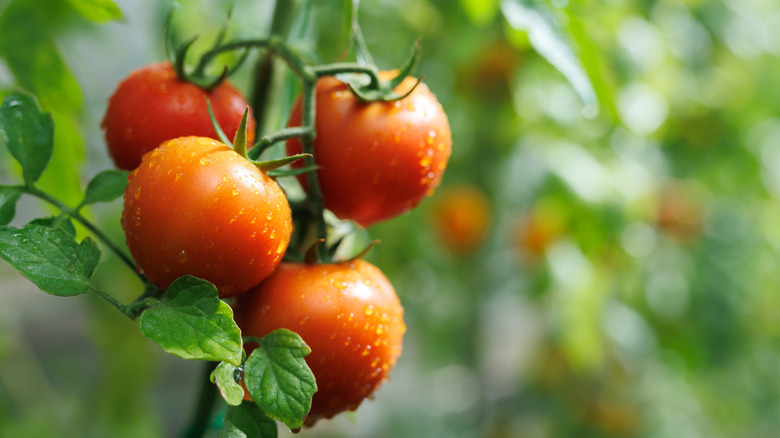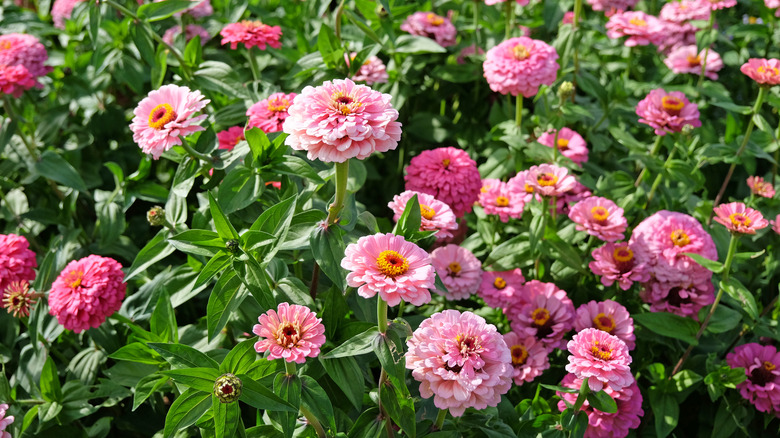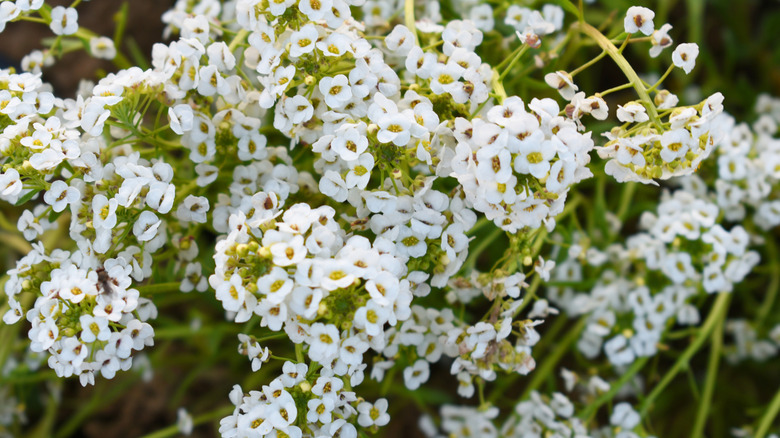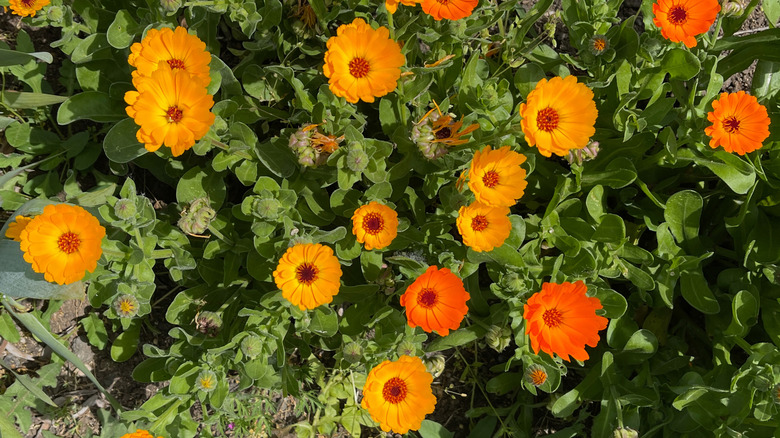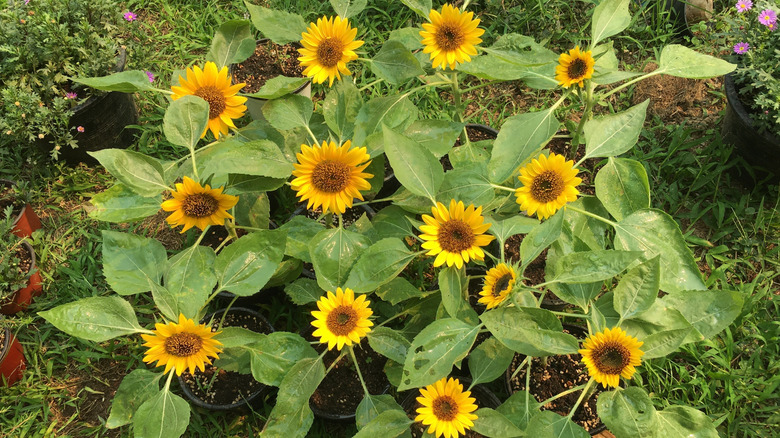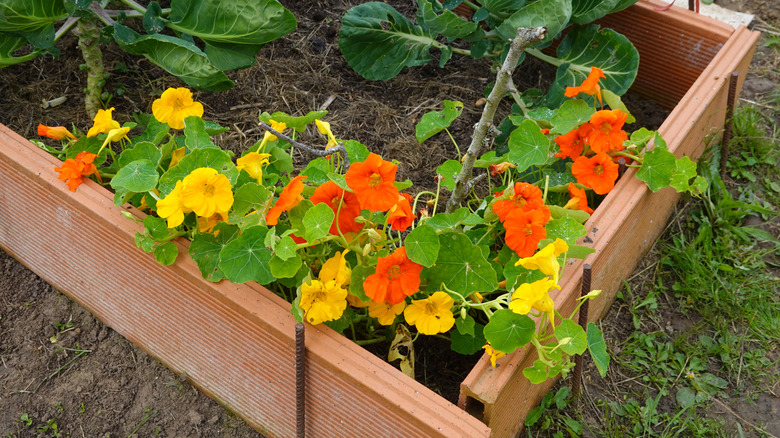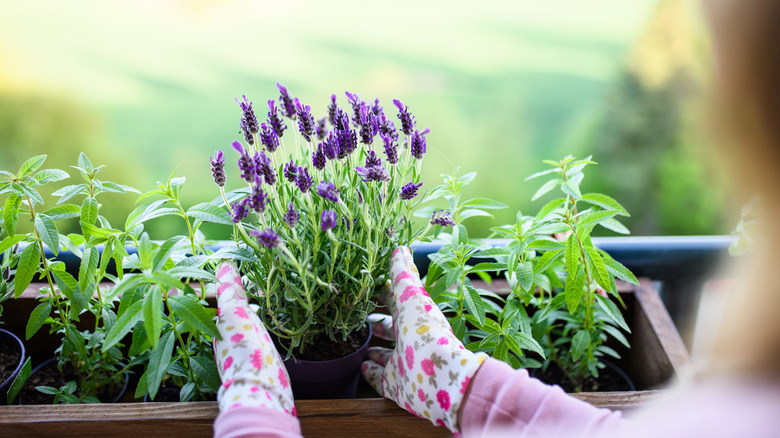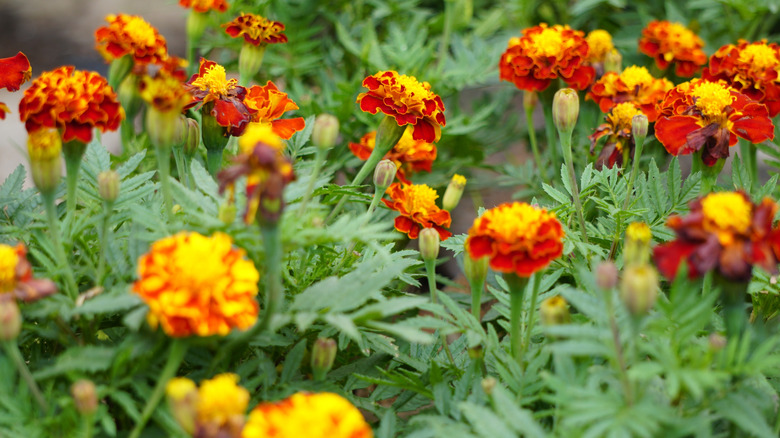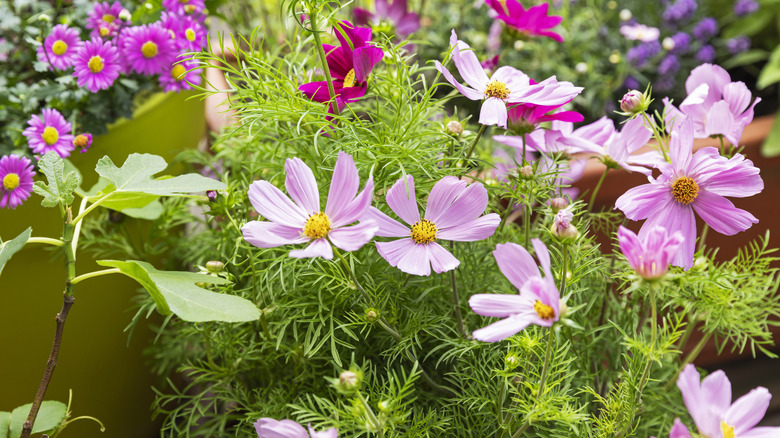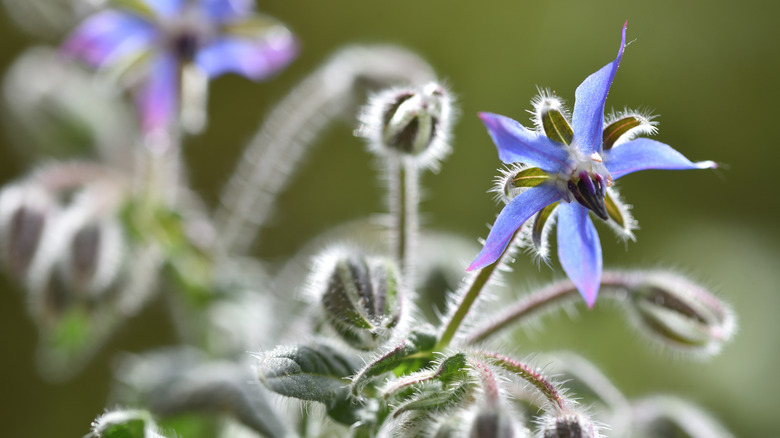10 Beautiful Flowers You'll Wish You Planted Near Your Tomatoes Sooner
Tomatoes are a great crop for a beginner gardener. With direct sunlight, loose, constantly moist soil, and a stake to prop the plant up, it's easy enough to grow your own edible tomatoes, especially if you pick the right variety for your region. However, tomatoes are susceptible to some issues, namely pests like aphids, hornworms, and flea beetles. These nuisances can gnaw into a growing tomato plant and ruin any progress it has made. Fortunately, there's a natural way to deter pests from tomatoes. Whether you need to get rid of troublesome bugs or simply improve your tomatoes' growing conditions, do so by planting flowering companion plants.
A companion plant is a plant that helps the growth of another. For example, mint repels pests from tomatoes — but perhaps without as much flair as one may hope. There are plenty of plant varieties that can benefit growing tomatoes, but not all of them produce flowers. So, if you want to beef up your tomato plant while simultaneously adding color and fragrance to your garden, try growing flowers like sweet alyssum, sage, marigold, and more.
Zinnia
If you can't decide exactly which colorful flowers to use to upgrade your garden's tomato game, try planting a few different varieties of Zinnia, which come in shades ranging from yellow to purple to white. Zinnias are a versatile annual and grow in USDA hardiness zones 3 to 10. They can withstand acidic or alkaline soil, are drought- and heat-resistant, and prefer full sun, making them compatible with sun-loving tomatoes. These flowers help tomatoes (and the rest of the garden) by attracting tons of pollinators with their vibrant petals.
Sweet alyssum
If hornworms are destroying your tomatoes, you may need a crop of sweet alyssum (Lobularia maritima). This perennial lures in predatory insects, like wasps, which eat many of the pests ruining your garden. Don't worry — these more intimidating bugs are usually not a problem for humans. Hardy in zones 5 to 9, sweet alyssum is a leafy flower, typically topped with small, round, white flowers, though some cultivars bloom in colors like purple, yellow, or red. Plant in loose soil with full or partial sun and water during dry periods, and sweet alyssum will grow easily.
Calendula
Known for its place in both traditional and modern medicine, calendula (Calendula officinalis) is commonly referred to as a pot or garden marigold. Despite their resemblance, calendula is an entirely different genus, although it and marigolds do share an important quality: they are both great tomato companion plants. Calendula thrives in a range of soil conditions, in hardiness zones 2 to 11, and will grow in full or partial sun with regular watering. This is another flower that attracts pollinators to tomatoes. Plus, since the petals are edible, you could potentially cook calendula and tomatoes in the same dish!
Sunflower
As you might infer from its name, sunflower (Helianthus annuus) grows best in direct sunlight. Additionally, this towering flower is drought-tolerant in zones 2 to 11 and requires minimal watering. Native to North America, sunflowers are popular with pollinators and make a beautiful way to deter leaf-footed bugs from your tomatoes. Plus, their height can provide shade to tomatoes and other plants, which is very helpful in hot climates. While some sunflowers can grow up to 10 feet tall, there are also dwarf varieties, so your tomatoes won't look puny in comparison.
Nasturtium
Hardy in zones 2 to 11, nasturtium (Tropaeolum) could be one of the most selfless flowers out there. That's because these fragrant flowers draw in bugs, like aphids, distracting the pests from tomatoes and any other sensitive plants. Like most other brightly colored flowers, nasturtiums also attract their fair share of helpful pollinators. These flowers come in warm shades of yellow, orange, and red and are low-maintenance when planted in loose soil and full sun. Its broad foliage and alluring colors make nasturtiums perfect for filling up planters or acting as a border for your vegetable garden.
Lavender
Lavender's (Lavandula angustifolia) tomato-aiding properties are twofold: along with attracting bees and other pollinators, lavender also emits a relaxing, pleasant aroma that pests like flea beetles can't stand. In hardiness zones 5 to 9, this drought-tolerant perennial requires minimal water, dry, well-draining soil, and at least two hours of direct sunlight a day. Lavender usually can't grow in the same soil as the popular garden vegetable you should be growing with it, so you may need to get creative with container plantings.
Marigold
Multiple species of marigold (Tagetes) can help keep pests with bad intentions for your tomatoes out of the garden. For instance, French marigolds (T. patula) are especially capable of warding away whiteflies and other bugs. Regardless of their nicknames, marigolds are native to Mexico and are generally tolerant of dry conditions. One popular variety, T. erecta, also called African, Mexican, or American marigold, is an adaptable flower that can be grown in hardiness zones 2 to 11. It performs well in various soil types (as long as they are well-draining) and can grow in full or partial sun.
Sage
Consider planting a few crops of common sage (Salvia officinalis), a delightful and aromatic addition to any garden with thick bunches of velvety, shrubby leaves and pea-shaped, soft purple flowers. It's drought tolerant in hardiness zones 4 to 8, where it prefers loose, rocky soil and full or partial sun. Sage can draw in helpful pollinators, like bees and butterflies, as well as harmful pests, like slugs and mites, that would otherwise attack your tomatoes, making it a perfect trap plant.
Cosmos
Attracting both pollinators and carnivorous insects that eat harmful pests, the benefits of planting cosmos in your edible garden are aplenty–particularly near tomatoes. Cosmos (Cosmos bipinnatus) are easy to cultivate in hardiness zones 2 to 11; they are drought-resistant, thrive in direct sunlight, and aren't too picky about soil quality. Even though cosmos are low-maintenance, their aggressive and sprawling growth pattern makes them more appropriate for gardeners adept with garden shears. These flowers are considered invasive in West Virginia, but if you live outside of the Mountain State and are prepared to prune, cosmos can seriously support tomatoes.
Borage
Although officially classified as an herb, borage (Borago officinalis) boasts unique flowers with spiky stems and periwinkle, star-shaped petals. It's drought tolerant in hardiness zones 2 to 11 and thrives even in poor soil. Borage can lure aphids and tomato hornworms away from your plants, as well as bring in pollinators. Plant it in full or partial sun, and soon, you'll have a source of edible foliage that accompanies a plate of the same tomatoes it worked so hard to protect.
